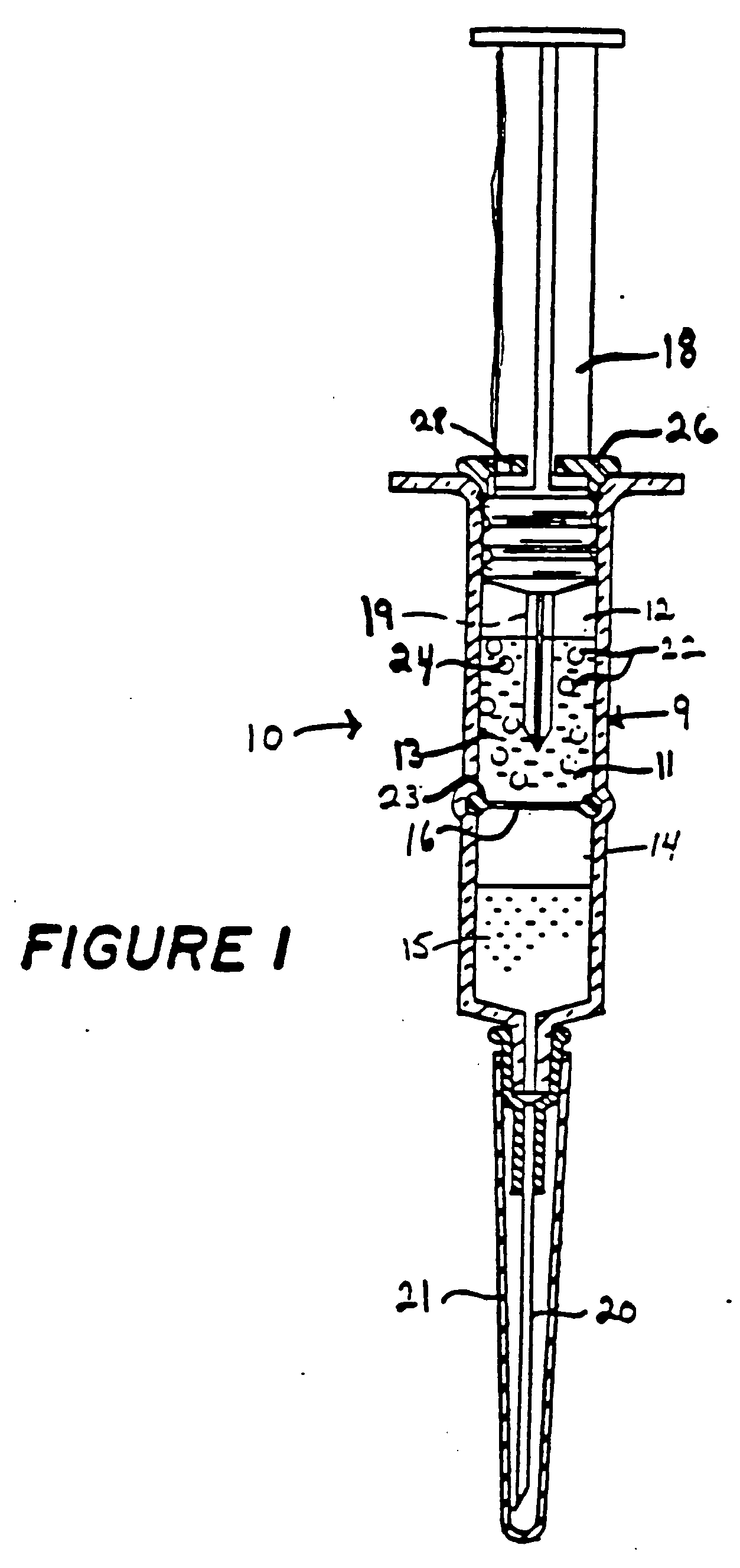Method for loading lipid like vesicles with drugs or other chemicals
- Summary
- Abstract
- Description
- Claims
- Application Information
AI Technical Summary
Benefits of technology
Problems solved by technology
Method used
Image
Examples
example 2
[0039] Liposomes were prepared by sonicating 0.5 grams of asolectin in 10 mls of 100 mM sodium citrate buffer, pH 4. An amount of 542 microliters of five normal sodium hydroxide was added. This raised the pH of the bulk solution containing the liposomes to 7.4. An intravenous catheter system consisting of a 27-gauge needle, connected to a 1.0 ml syringe by 4 inches of PE20 (polyethylene) plastic tubing was used for the infusion of the liposome suspension into the lateral tail veins of two female Wistar rats, 250 grams each. The liposome suspension was infused into the rats at a rate of about 0.2 mls per minute until a total volume of 0.7 mls had been infused. The rats appeared somewhat disoriented upon completion of the infusion, and release from the restraining cones, but otherwise none the worse from the experience. One hour later the animals were examined and were completely normal in appearance, and after one week's observation, no long-term effects of the infusion could be dete...
example 3
[0040] Lipid vesicles, containing 15 mg / ml of Sigma Type II-S phosphatidyl choline were prepared by sonication in a 120 mM lysine / phosphate buffer (chloride-free) at pH 10.5. The total sonication time was three minutes, with intermittent cooling. The vesicles were incubated for two minutes with 20 .mu.M of a spin-labeled carboxylic acid, prepared by reacting 1M succinic anhydride with one equivalent of Tempamine in choloroform, in the presence of a sufficient amount of a 100 mM citric acid to lower the external pH to 6 (approximately 1 volume equivalent). Analysis of the intravesicular concentration of the spin-labeled acid by ESR spectroscopy revealed that a more than 1,000-fold increase had occurred in response to the imposed pH gradient.
[0041] The vesicles were then transferred into a piece of dialysis tubing that had been spread into a flattened geometry to minimize the diffusion path of internal molecules to its surface. When the dialysis tubing was placed in a large volumes of...
example 5
[0044] Liposomes are prepared according to Example 1 or 2 and are concentrated by means of a standard filtration concentration to a concentration of approximately 50 mg asolectin per 1 ml of 100 mM sodium citrate. The resulting lipid-like solution is injected in mice as described in Example 2 such that the final infusion is approximately 1% of total fluid body volume of asolectin. This example indicates that large volumes of liposomes having substantial pH gradients can be injected into animals without serious adverse effects.
PUM
 Login to View More
Login to View More Abstract
Description
Claims
Application Information
 Login to View More
Login to View More - R&D
- Intellectual Property
- Life Sciences
- Materials
- Tech Scout
- Unparalleled Data Quality
- Higher Quality Content
- 60% Fewer Hallucinations
Browse by: Latest US Patents, China's latest patents, Technical Efficacy Thesaurus, Application Domain, Technology Topic, Popular Technical Reports.
© 2025 PatSnap. All rights reserved.Legal|Privacy policy|Modern Slavery Act Transparency Statement|Sitemap|About US| Contact US: help@patsnap.com


